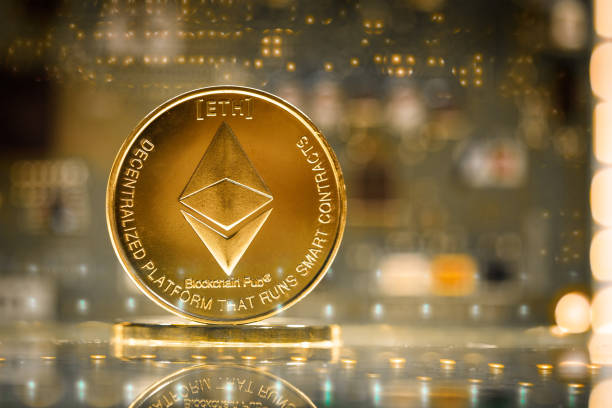Introduction
Ethereum is one of the most significant advancements in the world of blockchain and cryptocurrency. Its history is a tale of innovation, disruption, and vision. From its inception to its current status as a leading blockchain platform, Ethereum has transformed how we think about decentralized applications and smart contracts. In this article, we’ll take you on a journey through the history of Ethereum, exploring its origins, key milestones, and the visionary individuals behind its creation.
The Birth of a New Idea

The Genesis of Ethereum
The story of Ethereum begins with a young programmer named Vitalik Buterin. In late 2013, Vitalik proposed the idea of Ethereum in a white paper, envisioning a new blockchain platform that could support more than just cryptocurrency transactions.
Vitalik Buterin: The Visionary
Vitalik Buterin, a Russian-Canadian programmer, was deeply involved in the Bitcoin community. He recognized the limitations of Bitcoin’s scripting language and saw the potential for a more versatile blockchain platform. His vision was to create a decentralized platform that could support a wide range of applications.
The Ethereum White Paper
Vitalik’s white paper outlined a new blockchain that could execute arbitrary code, enabling developers to create decentralized applications (dApps). This was a revolutionary idea that went beyond the capabilities of existing blockchain platforms.
The Road to Development
Assembling the Team
To turn his vision into reality, Vitalik needed a team. He gathered a group of talented developers and researchers, including Dr. Gavin Wood, Joseph Lubin, and others. This team would lay the foundation for what would become Ethereum.
The Ethereum Yellow Paper
Dr. Gavin Wood, one of the co-founders, wrote the Ethereum Yellow Paper, which provided the technical specification for the Ethereum Virtual Machine (EVM). The EVM is the runtime environment for smart contracts, and it was a critical component of Ethereum’s architecture.
Initial Coin Offering (ICO)
In 2014, Ethereum conducted one of the first-ever Initial Coin Offerings (ICOs), raising over $18 million. This funding was crucial for the development of the platform and demonstrated the strong interest and support from the community.
The Launch of Ethereum

Frontier: The First Release
Ethereum’s first live release, known as Frontier, launched on July 30, 2015. Frontier was the first stage of Ethereum’s development, allowing developers to test and deploy smart contracts on the network.
Homestead: The Next Milestone
Homestead, the second major release, launched in March 2016. This release included several protocol improvements and optimizations, marking Ethereum’s transition from a beta platform to a more stable and secure network.
The DAO Hack and Its Aftermath

The DAO: A Bold Experiment
DAO (Decentralized Autonomous Organization) was an ambitious project built on Ethereum, aiming to create a decentralized venture capital fund. It raised over $150 million in Ether, making it the largest crowdfunding project at the time.
The DAO Hack
In June 2016, a vulnerability in The DAO’s code was exploited, resulting in the theft of approximately $50 million worth of Ether. This event sent shockwaves through the Ethereum community and highlighted the risks associated with smart contract security.
The Hard Fork Decision
To address the hack, the Ethereum community decided to implement a hard fork, effectively reversing the theft and returning the stolen funds. This decision was controversial and led to the creation of Ethereum Classic, a separate blockchain that continued on the original chain.
The Rise of Decentralized Applications
The Emergence of dApps
With the foundation in place, developers began to explore the possibilities of decentralized applications (dApps) on Ethereum. These applications leverage smart contracts to operate without intermediaries, offering new levels of transparency and trust.
Popular dApps on Ethereum
Several dApps gained popularity, including CryptoKitties, a blockchain-based game that allowed users to buy, sell, and breed virtual cats. This game demonstrated the potential for non-financial applications on Ethereum and introduced many people to the concept of NFTs (non-fungible tokens).
Ethereum’s Evolution
Metropolis: Byzantium and Constantinople
Metropolis, Ethereum’s next major development phase, was divided into two parts: Byzantium and Constantinople. These upgrades introduced various improvements to security, scalability, and functionality.
Ethereum 2.0: The Future of Ethereum
Ethereum 2.0, also known as Eth2 or Serenity, represents the most significant upgrade in Ethereum’s history. It aims to transition the network from a proof-of-work (PoW) consensus mechanism to proof-of-stake (PoS), improving scalability, security, and energy efficiency.
The Beacon Chain
The Beacon Chain, launched in December 2020, is the first phase of Ethereum 2.0. It runs in parallel with the existing Ethereum network and introduces PoS, laying the groundwork for future upgrades.
Challenges and Controversies

Scaling Issues
Ethereum’s popularity has led to congestion and high transaction fees, posing significant challenges for the network. Solutions such as layer 2 scaling and sharding are being developed to address these issues.
Competition and Interoperability
Ethereum faces competition from other blockchain platforms like Binance Smart Chain, Polkadot, and Solana. Interoperability and cross-chain solutions are crucial for Ethereum to maintain its dominance.
The Role of the Ethereum Community
The Ethereum Foundation
The Ethereum Foundation, a non-profit organization, plays a pivotal role in supporting Ethereum’s development and ecosystem. It funds research, development, and community initiatives to promote the platform’s growth.
Developer Community
The strength of Ethereum lies in its vibrant developer community. Thousands of developers contribute to Ethereum’s codebase, build dApps, and participate in hackathons and conferences.
Ethereum Improvement Proposals (EIPs)
Ethereum Improvement Proposals (EIPs) are a formal process for proposing changes and improvements to the Ethereum protocol. EIPs ensure that the community has a voice in the platform’s development.
The Impact of Ethereum
Decentralized Finance (DeFi)
One of Ethereum’s most significant impacts has been in the realm of decentralized finance (DeFi). DeFi platforms enable users to lend, borrow, and trade cryptocurrencies without intermediaries, democratizing access to financial services.
Non-Fungible Tokens (NFTs)
Ethereum has also been at the forefront of the NFT boom. NFTs are unique digital assets that can represent art, music, collectibles, and more. They have opened new avenues for creators and artists to monetize their work.
Enterprise Adoption
Many enterprises are exploring the use of Ethereum for various applications, from supply chain management to identity verification. Ethereum’s flexibility and robust smart contract capabilities make it an attractive choice for businesses.
The Road Ahead
Ongoing Research and Development
Ethereum’s journey is far from over. Ongoing research and development efforts focus on enhancing the platform’s scalability, security, and usability. Projects like Ethereum 2.0 and layer 2 solutions are crucial for the network’s future.
The Importance of Governance
Effective governance is essential for Ethereum’s continued success. The community-driven approach to decision-making ensures that Ethereum evolves in a way that aligns with the interests of its users.
The Vision of a Decentralized Future
Ethereum’s vision extends beyond the realm of technology. It represents a movement towards a more decentralized, transparent, and equitable future. As Ethereum continues to evolve, it has the potential to reshape industries and empower individuals around the world.
Conclusion
Ethereum’s history is a testament to the power of innovation and the resilience of a passionate community. From its humble beginnings as an idea in a white paper to its current status as a leading blockchain platform, Ethereum has come a long way. Its journey is marked by groundbreaking developments, challenges, and a relentless pursuit of decentralization. As we look to the future, Ethereum’s impact will continue to grow, shaping the world of blockchain and beyond.
FAQs
Q1: What is Ethereum’s primary purpose?
Ethereum’s primary purpose is to serve as a decentralized platform for building and deploying smart contracts and decentralized applications (dApps).
Q2: How does Ethereum differ from Bitcoin?
While Bitcoin is primarily a digital currency, Ethereum is a programmable blockchain that allows developers to create and deploy smart contracts and dApps.
Q3: What are smart contracts?
Smart contracts are self-executing contracts with the terms of the agreement directly written into code. They automatically enforce and execute the terms when conditions are met.
Q4: What is Ethereum 2.0?
Ethereum 2.0, also known as Eth2 or Serenity, is an upgrade to the Ethereum network that aims to improve scalability, security, and sustainability by transitioning to a proof-of-stake (PoS) consensus mechanism.
Q5: What are some popular applications built on Ethereum?
Popular applications built on Ethereum include decentralized finance (DeFi) platforms like Uniswap and Compound, as well as NFT marketplaces like OpenSea and games like CryptoKitties.


